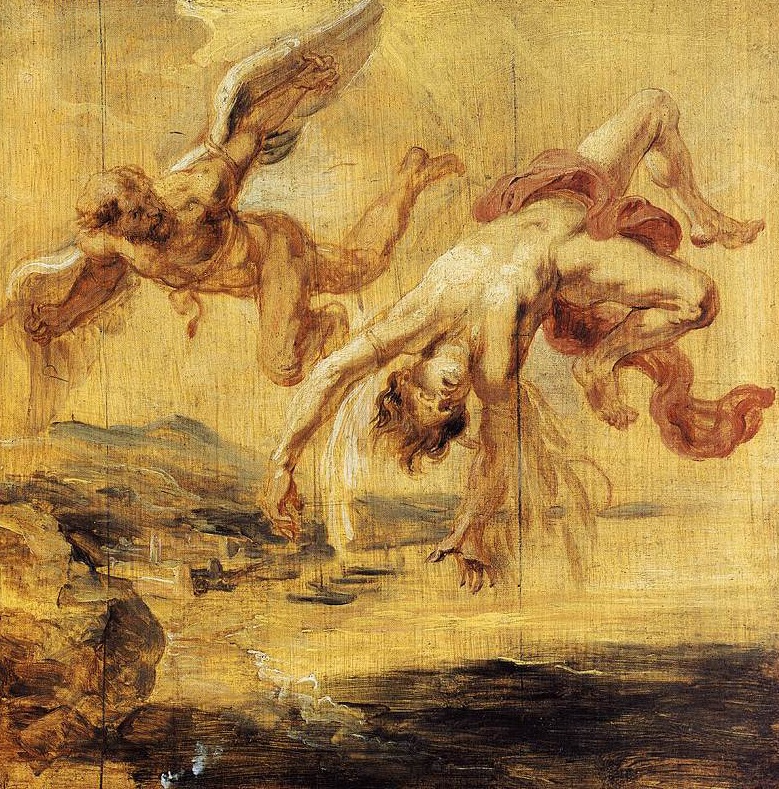Sentimentality
 "the techno-scape"
"the techno-scape" Navigating the site:
How does defining "technology" pose a problem for the use of techniques in art history?
Introductory: The Middle Ages spilled into the Renaissance.
| Representations of the "world" | |
| Bruegel's "The Fall of Icarus" | |
European dreams |
|
-
Netherlands
-
(1525/30-1569)
What do you see in the painting:
- Classical subject
- Medieval motif
- Sea of modernity
- Can you find Icarus ?
- landscape and allegory
- Signs of a revolution ?

Traditional Fall of Icarus and Daedalus
Technological revolutions in portrayal of things:
- Bruegel
- Brunelleschi
- Michelangelo
- Leonardo Da Vinci
- Denis Diderot
- Turner
- Steiglitz
- Sheeler
Technology is the study of how we use tools to alter our conditions and enable more people to live well.
1. Pieter Bruegel the Elder, nicknamed ‘Peasant Bruegel’ was probably the most significant and exciting painter in the Northern Europe during the middle part of the sixteenth century.
art informs us from a point of view that is insufficiently understood
This behavior of abstracting the setting can confuse the portrayal of the past with the actual vicissitudes of history, unless reality is viewed in multiple ways and from more than one perspective, and without deception.
Under the illusion
People dwell comfortably under the illusion of certainty. That is true especially of people raised on the Catechism and those who are thus catechetical thinkers confuse their own apparently seamless impressions of reality with the actual condition of the world. In a painting we are easily convinced that the the world is as the artist portrays nature, without interruption, without the underlying interlocking architecture of ever more diminutive forms. It is an illusion to think that any one being's perception of nature is sufficient to explain the complexity of the operational whole. It clearly is not.
Many a mistaken thinker believes that they experience and understand the world for what it is, rather than for how it is becoming as it undergoes constant change.
JVS, August 23, 2007
Truisms
Art is an imitation of nature that employs a technique.
Technology as art is a representation of constructed settings.
Art reveals long-term changes of short-term periods.
Irrationality or exaggeration in depicting machinery is inherently artistic.
Knowledge is always restricted by viewpoint, or perspective (point of view) yet further circumscribed by physical conditions, how the eye visualizes a setting, and how the brain recalls the sensory impressions.

